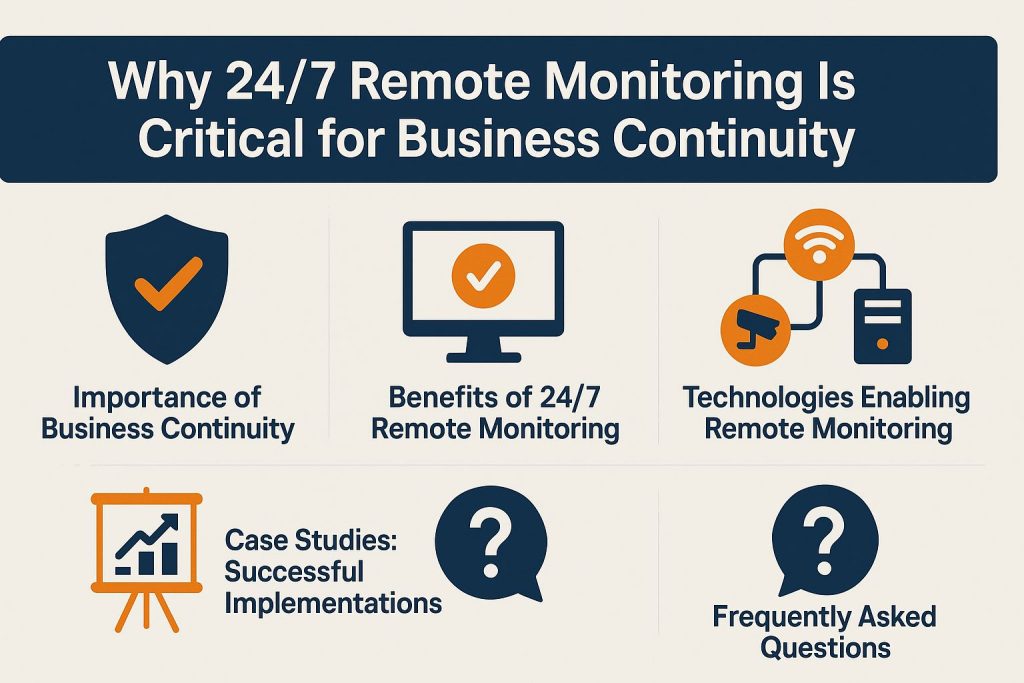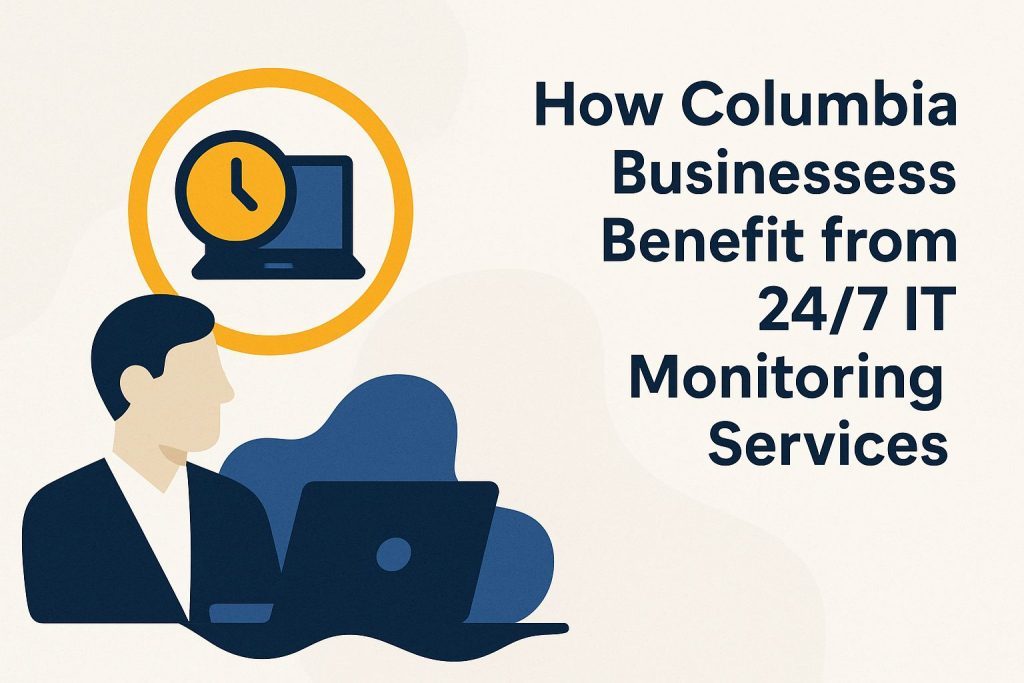Why Every Business Needs 24/7 IT Monitoring
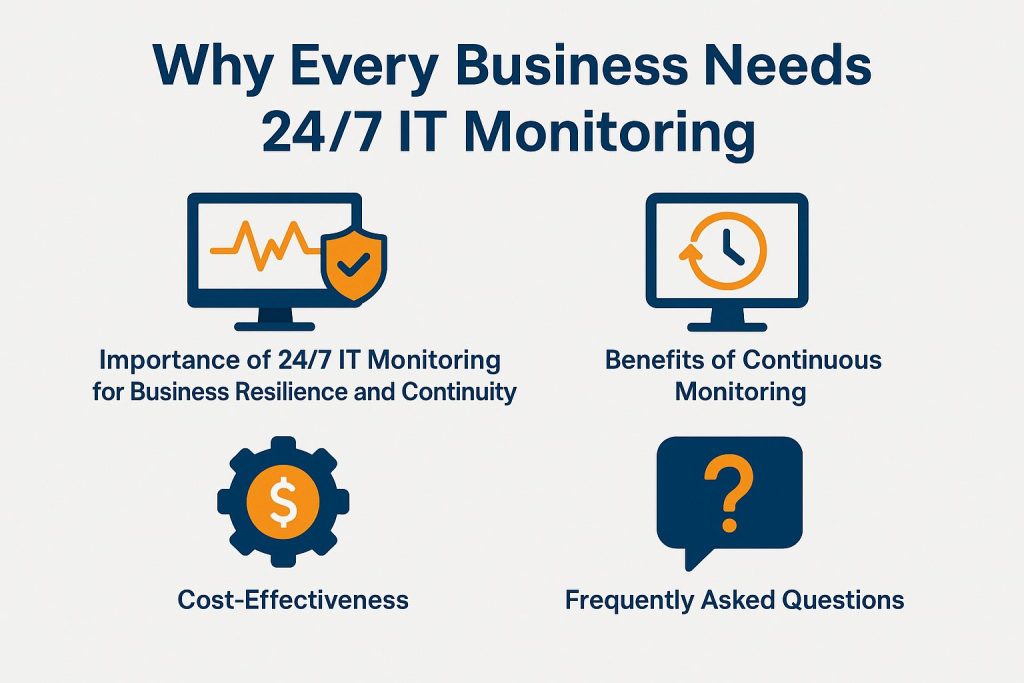
Technology can disrupt business at any time. Vigilant IT monitoring is now critical. 24/7 IT monitoring is essential for organizations that want to maintain efficiency, improve data analytics, and reduce downtime. Research shows that companies can lose up to $5,600 per minute during outages.
Importance of 24/7 IT Monitoring for Business Resilience and Continuity
24/7 IT monitoring is essential for any organization aiming to uphold operational efficiency, enhance data analytics, and minimize downtime.
Research shows companies lose up to $5,600 per minute during outages. One of our most insightful case studies demonstrates the importance of effective IT disaster recovery planning in mitigating such losses.
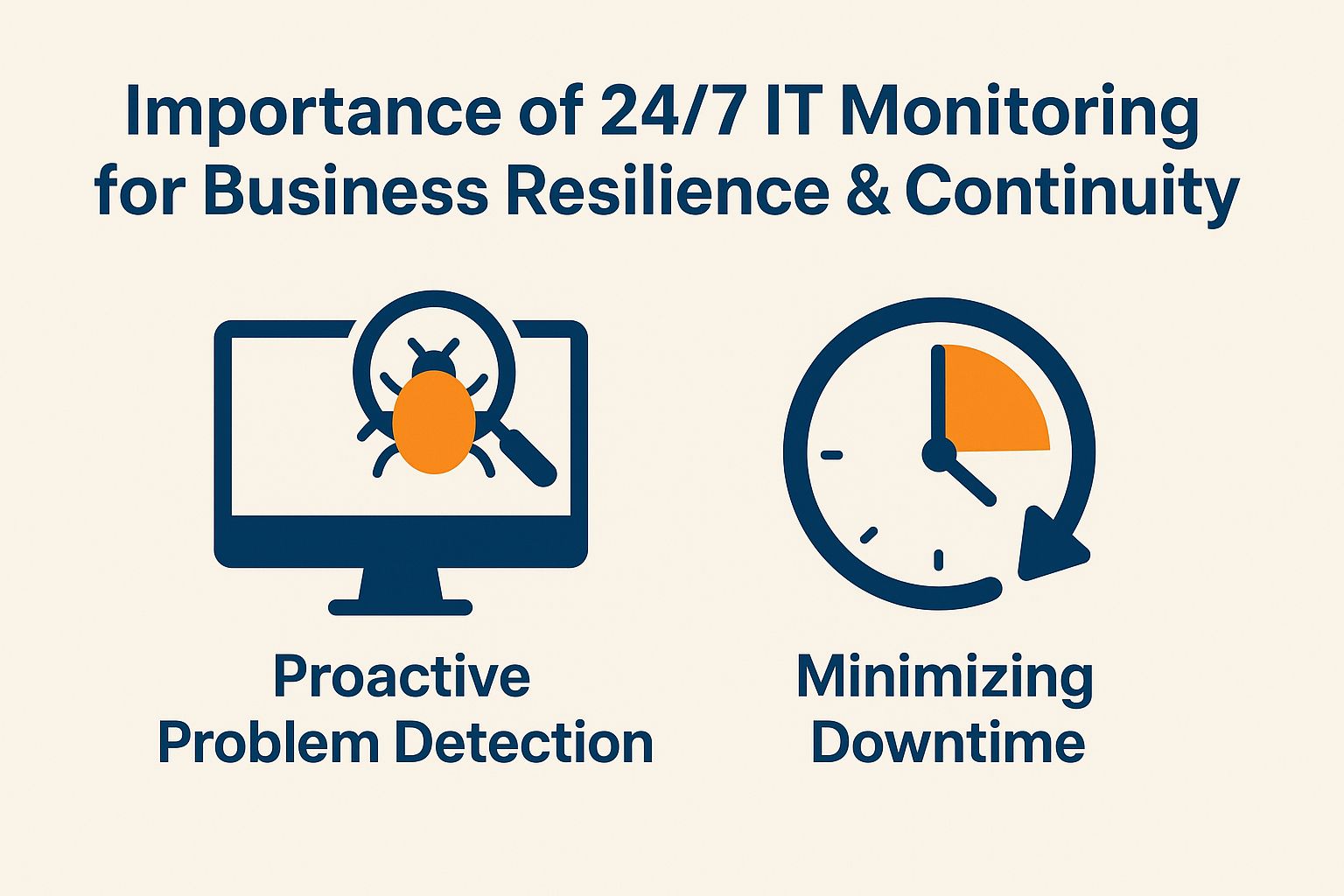
Proactive Problem Detection
Tools like Nagios and Zabbix detect system vulnerabilities before they become critical.
Automated alerts help organizations monitor system performance in real-time. Teams can respond quickly to anomalies.
For instance, a major telecom company successfully implemented Nagios to monitor their network infrastructure, achieving a 40% reduction in incident response time and significantly improving their resource allocation and IT strategy.
They configured alerts for unusual traffic spikes, which facilitated immediate investigation and resolution of potential issues. Regular analysis of logs helped to identify recurring problems, leading to the development of targeted solutions that enhanced overall system reliability and user satisfaction.
Minimizing Downtime
Efficient IT monitoring minimizes downtime. Studies indicate organizations can achieve up to 99.9% uptime with robust monitoring systems.
Efficient IT monitoring plays a crucial role in minimizing downtime, with studies indicating that organizations can achieve up to 99.9% uptime by implementing robust monitoring systems.
To accomplish this, organizations may consider utilizing tools such as PRTG Network Monitor or Nagios. PRTG provides real-time alerts for issues, enabling proactive responses, while Nagios is known for its detailed reporting and performance tracking capabilities.
Regular quarterly system audits help identify vulnerabilities before costly downtime occurs. Implementing these strategies not only enhances system reliability but also enables IT teams to manage incidents effectively.
By integrating the right tools with a disciplined approach to monitoring, organizations can maintain optimal operational efficiency.
Benefits of Continuous Monitoring
Continuous monitoring ensures optimal performance and resource management. It also boosts security and data protection.
In fact, it has been shown to reduce security breaches by up to 50% in environments where monitoring is implemented. For a deeper understanding of how proactive monitoring can aid business growth, consider exploring our analysis on Proactive IT Monitoring for Growth in Columbia.
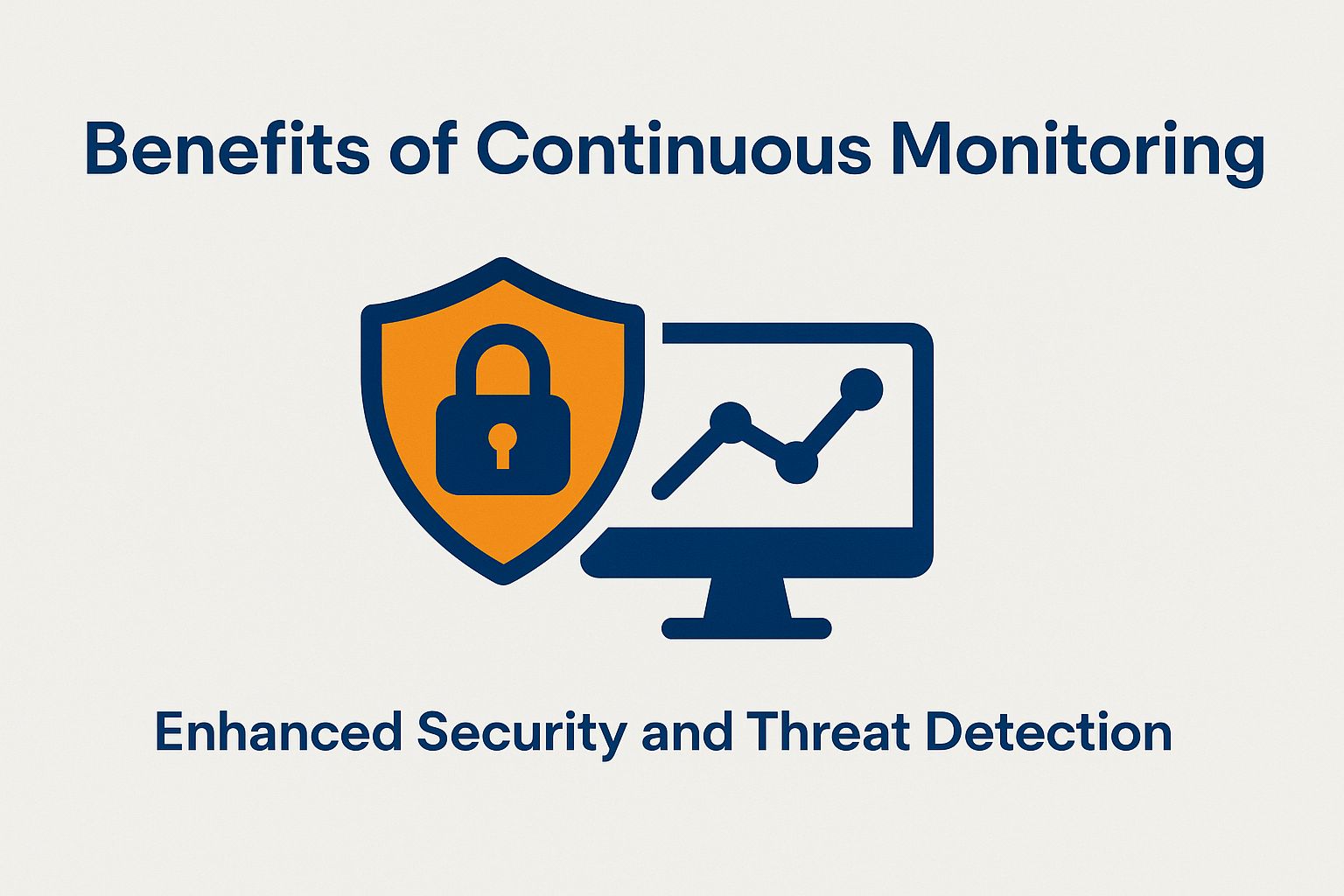
Enhanced Security and Threat Detection
Tools such as Splunk and LogRhythm significantly enhance security postures by providing real-time analytics that assist organizations in identifying threats before they can impact operations.
Organizations like Target and Equifax have effectively utilized these tools to continuously monitor user behavior, enabling them to detect anomalies and enhance endpoint protection against potential security breaches.
For instance, after implementing Splunk, Target was able to quickly identify unauthorized access, which triggered an alert that helped mitigate a larger data compromise. Likewise, Equifax employed LogRhythm to monitor unusual network patterns, ultimately leading to the discovery of a breach well before sensitive information could be leaked.
These proactive measures underscore the critical importance of real-time monitoring in the prevention of cyber threats.
Cost-Effectiveness
Investing in IT monitoring saves costs. Organizations can cut operational costs by up to 30% through better resource allocation.
By implementing tools like Nagios or Zabbix, companies can monitor system performance effectively.
Downtime can cost between $200,000 and $500,000 per hour. The cost varies by industry. A good monitoring system costs $1,500 to $5,000 a year. It often pays for itself by preventing a few incidents.
Organizations see lower incident response costs. They also improve operational efficiency. This leads to a good return on investment for monitoring solutions. For those looking to further enhance their IT infrastructure, our IT strategy tips for mid-sized businesses provide essential guidance on scaling operations successfully.
Frequently Asked Questions
What is 24/7 IT monitoring and why does every business need it?
24/7 IT monitoring means checking and managing a company’s IT systems, networks, and devices all the time. Every business needs 24/7 IT monitoring. It helps keep technology running smoothly and avoids costly IT problems.
How does 24/7 IT monitoring help a business stay secure?
Constantly monitoring IT systems and networks helps find and stop security breaches and cyber attacks early. With 24/7 IT monitoring, businesses can stay ahead of potential threats and quickly address any vulnerabilities to keep their data and systems safe.
Can 24/7 IT monitoring save a business money?
Yes, 24/7 IT monitoring saves businesses money in the long run. Fixing problems early helps avoid costs from emergency IT services and lost productivity.
What are the benefits of having 24/7 IT monitoring for a business?
Some of the key benefits of 24/7 IT monitoring for a business include improved security, increased productivity, and reduced IT costs. It also allows for better resource allocation and planning, as potential system failures can be identified and addressed before they become major problems.
Do small businesses need 24/7 IT monitoring as well?
Yes, even small businesses can benefit greatly from 24/7 IT monitoring. Small businesses can be more vulnerable to cyber attacks and system failures. This is often due to limited resources and lack of dedicated IT staff. 24/7 monitoring can provide small businesses with the same level of protection and proactive support as larger companies.
Can a business outsource their 24/7 IT monitoring?
Yes, many businesses choose to outsource their 24/7 IT monitoring to specialized IT service providers. Outsourcing is a cost-effective and efficient solution for all businesses.
